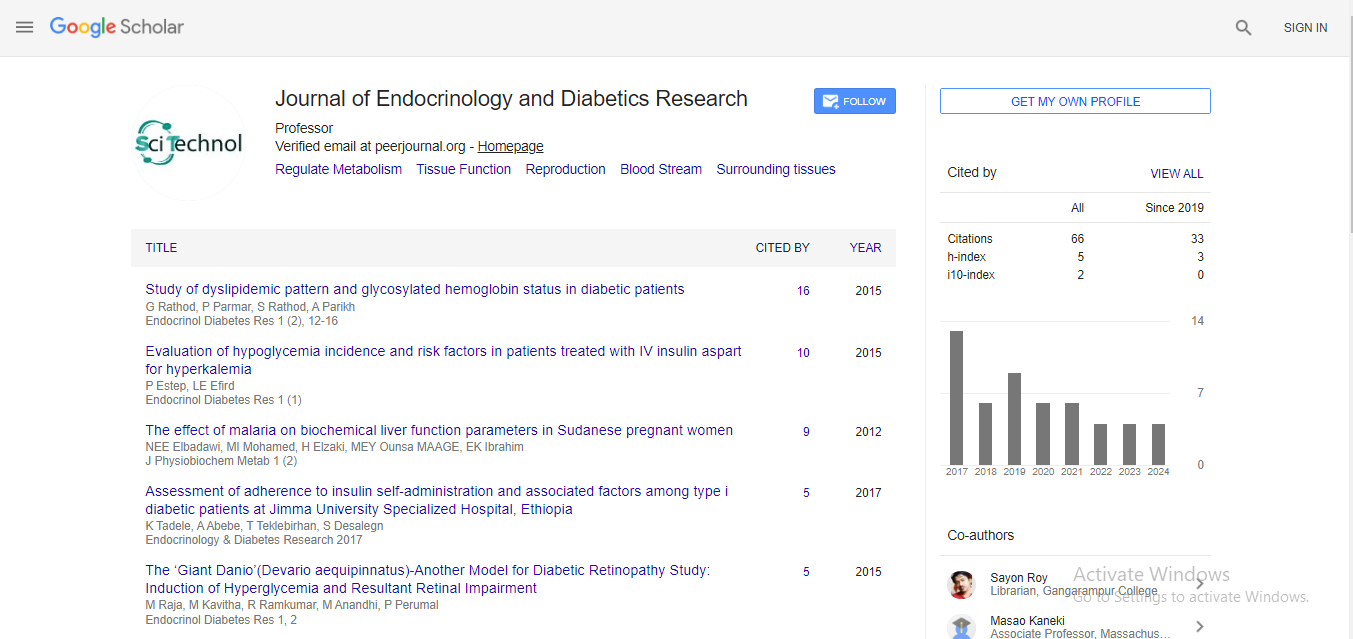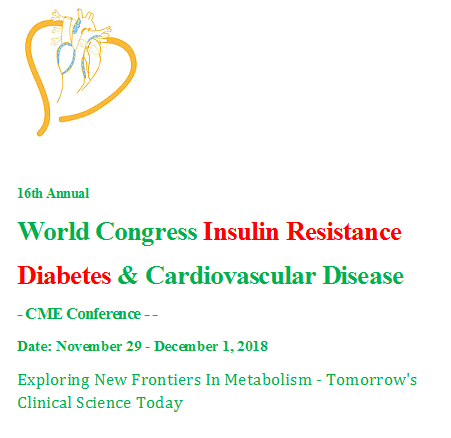Commentary, Endocrinol Diabetes Res Vol: 10 Issue: 6
The Role of Adiposity and Endocrine Disruption in the Development of Type 2 Diabetes
Michael Romina*
1Department of Medicine, University of Alberta, Edmonton, Alberta, Canada
*Corresponding Author: Michael Romina,
Department of Medicine, University of
Alberta, Edmonton, Alberta, Canada
E-mail: michael.rom@ua.ca
Received date: 26 November, 2024, Manuscript No. ECDR-24-154202;
Editor assigned date: 28 November, 2024, PreQC No. ECDR-24-154202 (PQ);
Reviewed date: 12 December, 2024, QC No. ECDR-24-154202;
Revised date: 20 December, 2024, Manuscript No. ECDR-24-154202 (R);
Published date: 27 December, 2024, DOI: 10.4172/2324-8777.1000434.
Citation: Romina M (2024) The Role of Adiposity and Endocrine Disruption in the Development of Type 2 Diabetes. Endocrinol Diabetes Res 10:6.
Description
Type 2 Diabetes (T2D) is a chronic metabolic condition with insulin resistance, β-cell dysfunction and hyperglycemia. Among the risk factors for T2D, adiposity plays a major role, particularly in the context of visceral fat accumulation and its impact on endocrine function. Adipose tissue, far from being inert, acts as an active endocrine organ that secretes hormones and cytokines influencing glucose metabolism. When coupled with environmental and hormonal disruptions, adiposity becomes important factor in the pathogenesis of T2D. In this the role of adiposity and endocrine disruption in the development of T2D.
Adipose tissue is not merely a storage site for excess calories but an active participant in endocrine signaling. It secretes hormones, known as adipokines that regulate energy homeostasis, glucose metabolism and inflammation. In obesity, particularly visceral fat accumulation, the endocrine function of adipose tissue becomes dysregulated.
This anti-inflammatory adipokine enhances insulin sensitivity by activating AMP-Activated Protein Kinase (AMPK) and promoting glucose uptake. However, in obesity, adiponectin levels are reduced, contributing to insulin resistance. Leptin regulates appetite and energy expenditure but becomes less effective in obesity due to leptin resistance. This disrupts energy balance and increases insulin resistance. Resistin levels in obesity impair insulin signaling by increasing pro-inflammatory cytokine production.
Visceral fat, stored around internal organs, is highly metabolically active and significantly contributes to insulin resistance. Unlike subcutaneous fat, visceral fat releases a higher concentration of Free Fatty Acids (FFAs) and inflammatory mediators, both of which interfere with insulin action. Excess free fatty acids impair insulin signaling by activating serine kinases that phosphorylate insulin receptor substrates, reducing glucose uptake by muscle and liver cells. Adipose tissue in obesity secretes cytokines like Tumor Necrosis Factor-α (TNF-α) and interleukin-6 (IL-6), which inhibit insulin signaling pathways and promote systemic inflammation.
Excess fat often accumulates in non-adipose tissues, such as the liver, muscles and pancreas, a phenomenon known as ectopic fat deposition. This has significant consequences for glucose metabolism. Fatty liver disease affects hepatic insulin signalling and increases glucose production, aggravating hyperglycaemic conditions. Lipid accumulation in skeletal muscles reduces insulin-stimulated glucose uptake, further contributing to insulin resistance. Fat infiltration in pancreatic β-cells induces lipotoxicity, which damages β-cells and impairs insulin secretion. Cortisol levels, often associated with stress or conditions like Cushing’s syndrome, promote hepatic glucose production and visceral fat accumulation, worsening insulin resistance. Thyroid dysfunction, particularly hypothyroidism, reduces basal metabolic rate and impairs glucose utilization, contributing to weight gain and insulin resistance.
Excess body weight, particularly visceral adiposity, is the most significant modifiable risk factor for T2D. Genetic predisposition influences susceptibility to obesity and β-cell dysfunction, compounding the effects of adiposity. High-calorie diets and sedentary lifestyles promote weight gain and hormonal imbalances. A balanced diet rich in fiber, lean protein and healthy fats improves insulin sensitivity and reduces visceral fat. Avoiding processed foods and sugary beverages can help reduce obesity-related risks. Regular physical activity enhances glucose uptake, reduces visceral fat and improves adipokine profiles. Both aerobic and resistance training have proven benefits in managing insulin resistance. The first-line medication for T2D, metformin reduces hepatic glucose production and improves insulin sensitivity.
Conclusion
Adiposity and endocrine disruption are central to the pathogenesis of type 2 diabetes. Excess fat accumulation, particularly visceral and ectopic fat, leads to hormonal imbalances, systemic inflammation and impaired glucose metabolism. Environmental endocrine disruptors further exacerbate these effects, highlighting the multifaceted nature of T2D development. Addressing these factors through lifestyle interventions, pharmacological therapies and public health measures is essential for reducing the global burden of T2D. Advances in understanding the interplay between adiposity and endocrine function offer hope for improved prevention and treatment strategies, covering the way for better outcomes in individuals at risk or living with T2D.
 Spanish
Spanish  Chinese
Chinese  Russian
Russian  German
German  French
French  Japanese
Japanese  Portuguese
Portuguese  Hindi
Hindi 


